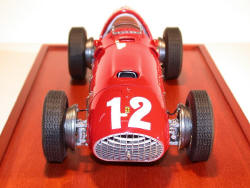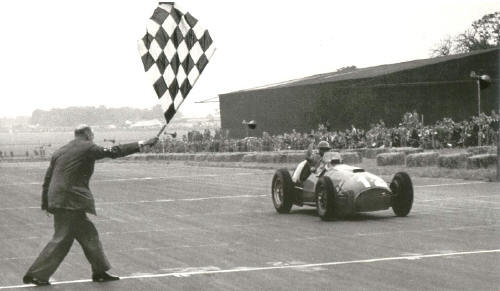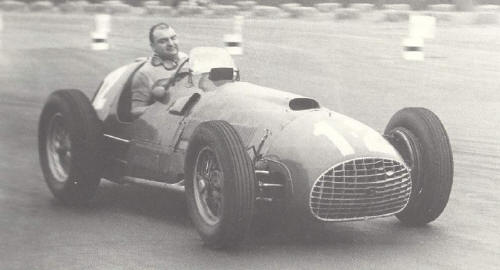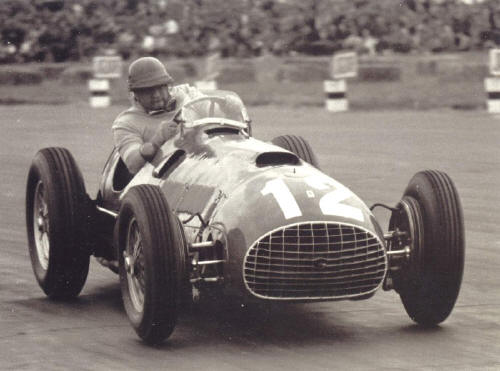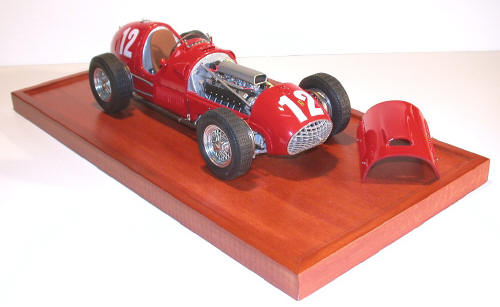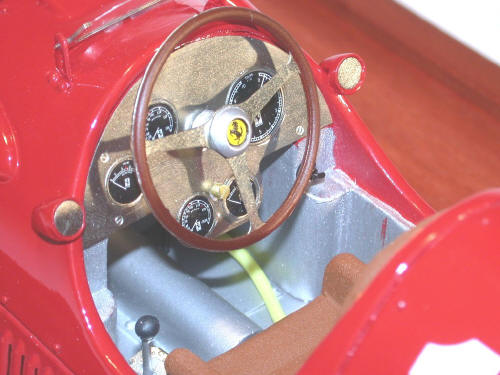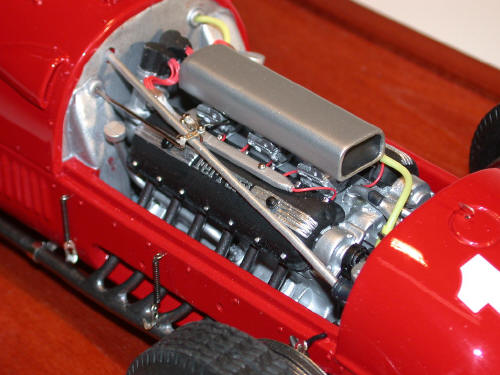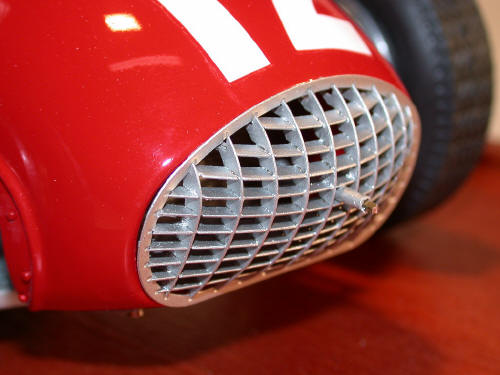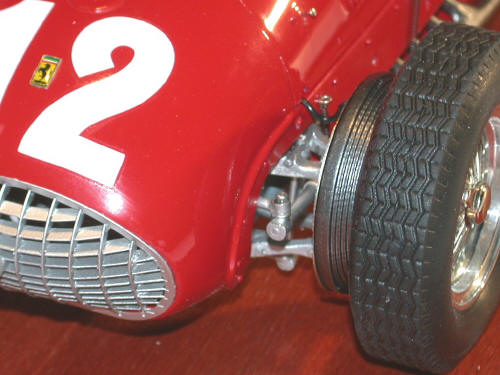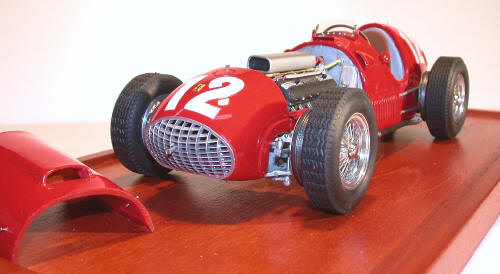 |
|
|
Formula one |
|
|
The very first F1 Ferrari victory Ferrari 375 F1 1/12 scale MG Model Plus MP12.26 |
|
|
by Alessandro Goracci |
|
|
Legal Notice No material from Modeler Site any Web site owned, operated, licensed, or controlled by Mario Covalski & Associated may be copied, reproduced, republished, uploaded, posted, transmitted, or distributed in any way, except that you may download one copy of the materials on any single computer for your personal, non-commercial home use only, provided you keep intact all copyright and other proprietary notices. Modification of the materials or use of the materials for any other purpose is a violation of Mario Covalski & Associated's copyright and other proprietary rights. Read More here > Legal notice Silverstone, 14 July 1951. A place and a day, both of which were to remain engraved on the mind of Enzo Ferrari throughout his life. The RAC British Grand Prix, the fourth race of the 1951 F.1 World Championship, was over. The winner took the chequered flag one minute ahead of Juan Manuel Fangio and his Alfa 159. The winning car may have worn Italian red, but it wasn’t one of the, up till now, unbeatable Alfas. Enzo Ferrari at Maranello followed the race on the radio. “When, for the first time in the history of our direct confrontations, Gonzalez’ Ferrari streaked ahead of the 159 (a development of the 158) and the entire Alfa team in 1951, I cried with joy. But my tears of enthusiasm were also mixed with tears of pain, because on that day I thought, ‘I have killed my mother’”.
The man who won the race was José Froilan Gonzalez. Argentinian, like Fangio. Fangio had told him before: “We will be beaten soon, and I think that only you will beat the Alfa”. Not particularly tall and weighing over 100 kilos, his rather developed head earned him the nickname El Cabezon. There was never any need to tell him to go fast, or as fast as possible: “For me, all of the roads and all of the tracks are straight. The corners don’t exist!”, he said. Ferrari wrote: “Froilan Gonzalez was a fellow-countryman of Fangio, but there was little affinity between them. In a certain sense, Gonzalez was his exact opposite. […] But I have to say that he was a courageous driver, strong-willed and generous. I can never forget that he gave Ferrari some magnificent satisfactions…”. When Michael Schumacher, 50 years on from that victory, lapped the same restored chassis around the Silverstone track before the 2001 British GP, he was astonished by the intensity of feeling he was left with after driving the car: “No safety belts, no protection at all… my compliments and all my respect to those drivers that raced in such bad conditions!”. The MG kit The newest release from MG Model Plus is a faithful reproduction of the no. 2 chassis, the car in which Gonzalez took the trophy at Silverstone in 1951. This is a very easy, fast – as fast a 1:12th scale model kit can be - and enjoyable kit to build, and all the parts are designed with this in mind. Much care has been taken to ensure accurate fit of parts, and the main body and tubular chassis can easily be pre painted before assembling them together. The engine cover can be opened by removing the working spring hinges. Be careful during building! The holes on the lower part of the body are misplaced, you should have to drill new ones. Under the engine cover, the car is fitted with the huge Ferrari V12.
The engine is a complete model itself, and you can add the level of detail you wish, according to your references. Be sure to get the right pics: during the Golden Era, every car, chassis, and engine was unique, and many small details would differ from one car to the next. For example, the beautifully restored car that we were talking above has an incorrect dual-ignition engine, instead of the single-ignition engine used at Silverstone in 1951 – you can recognize it by looking at the different spacing between exhausts.
Now, all you have to do is put the finished car in a display case, or just on a base of nicely polished wood, and place it on the shelf where everyone can see it. It all began from there…
Support us ordering our notes in PDF > Here |
|
